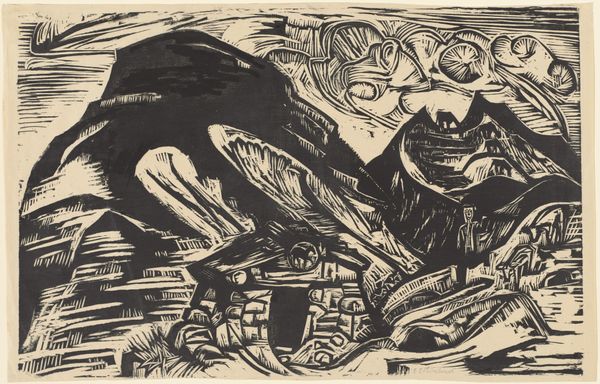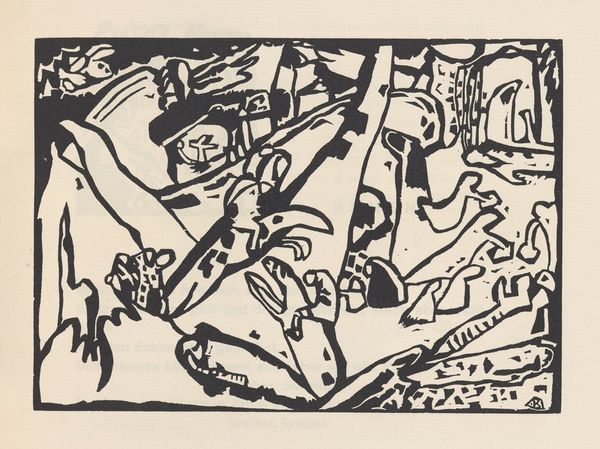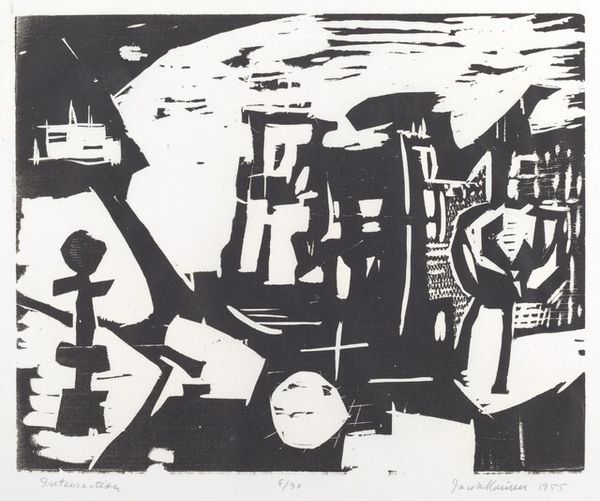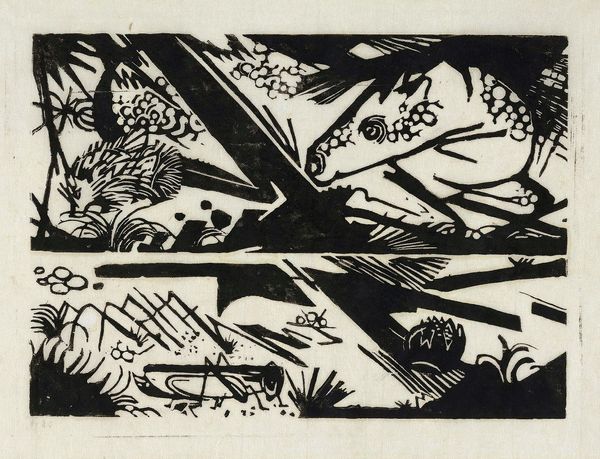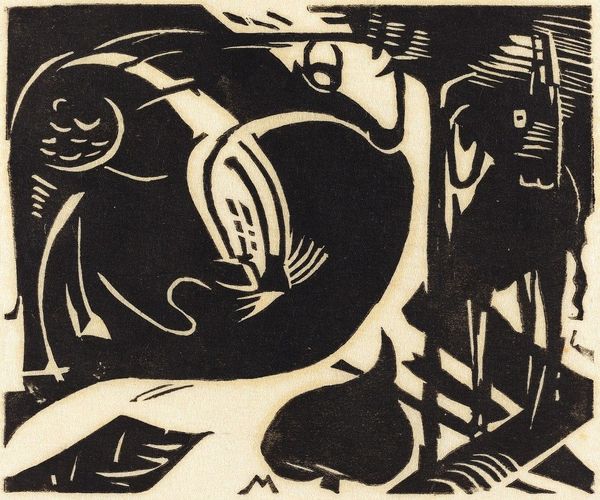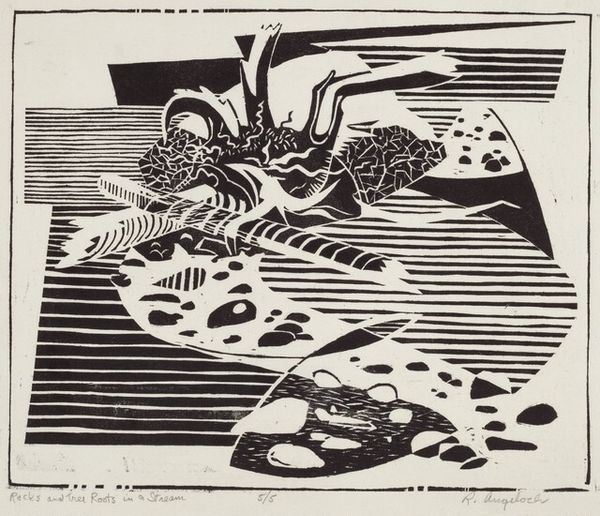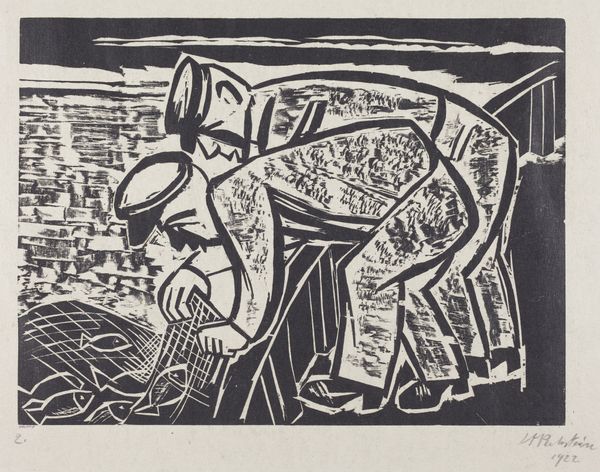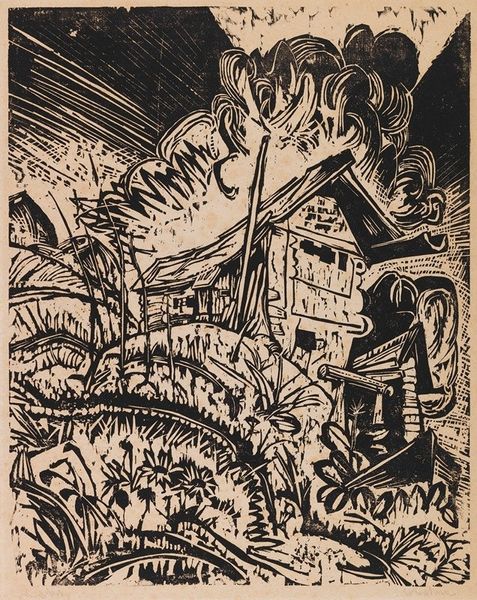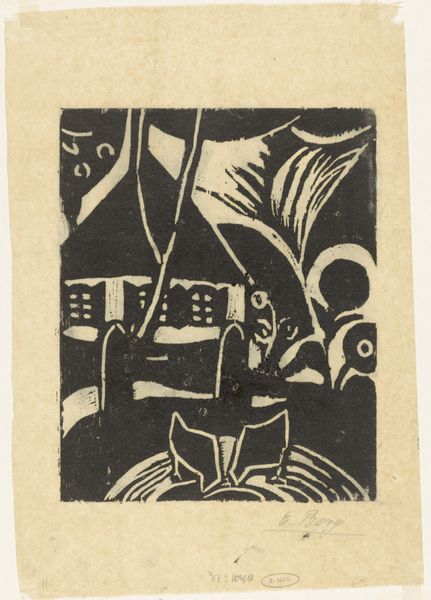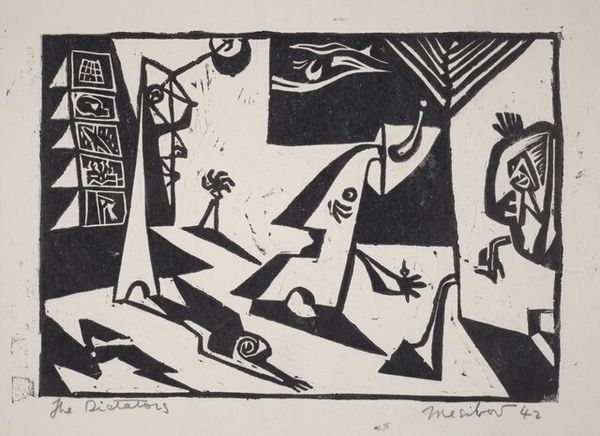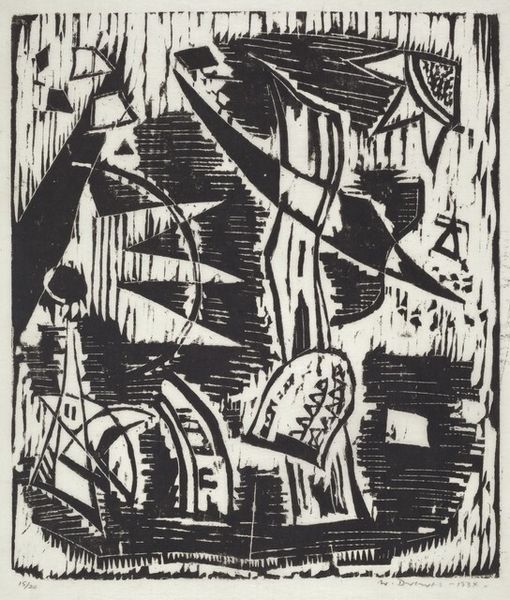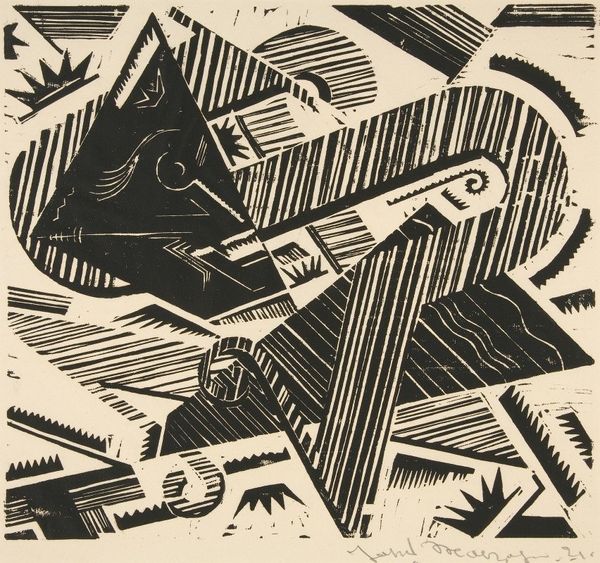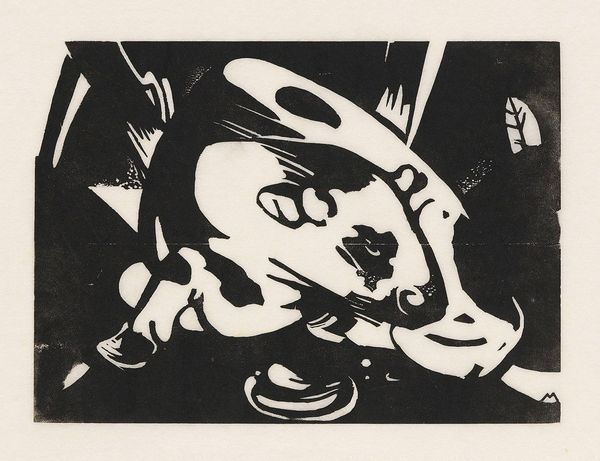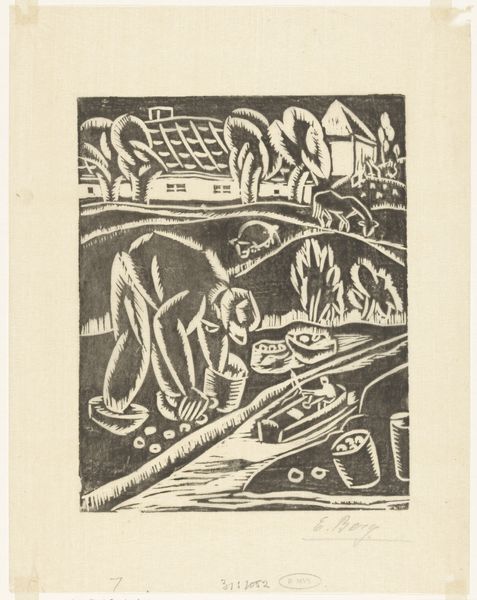
# print
#
pen sketch
#
junji ito style
#
ink drawing experimentation
#
pen-ink sketch
#
thin linework
#
limited contrast and shading
#
pen work
#
sketchbook drawing
#
tattoo art
#
doodle art
Dimensions: plate: 12.7 × 17.8 cm (5 × 7 in.) sheet: 20 × 28 cm (7 7/8 × 11 in.)
Copyright: National Gallery of Art: CC0 1.0
Curator: There's a palpable sense of wartime anxiety in this print by Hugh Mesibov, completed in 1942. He calls it "Shipyard". Editor: Stark. Almost menacing, wouldn't you say? The deep blacks against the harsh white create a kind of visual alarm. I am wondering about the experience of war and its effects on labor. Curator: The shipyard as a symbol of productivity, but also of potential conflict. I note how the composition is packed, creating visual stress and anxiety in the viewer. The ships aren't gently floating—they're wedged in. What about the deeper connections here? Editor: Precisely. And in '42, the shipyards represented more than just industry; they became a focal point for the mobilization of American society. Looking at it now, I'm struck by the potential erasure of human element as a result of war efforts, almost a marginalization by overwhelming machinery. The laborers' personal stories lost in the cogs of national urgency, perhaps? Curator: A valid point. Mesibov's choice of medium – printmaking, likely linocut given its bold contrasts – is so potent in symbolizing the urgency and standardization required during wartime. Editor: I’m particularly drawn to how the chaotic scene manages to retain such graphic order. Almost as though industrial power strives to suppress or disguise disruption. Curator: This interplay between chaos and control also reminds me of how the shipyards functioned as melting pots, bringing together people from diverse backgrounds, each carrying unique perspectives, but also carrying social conflict regarding race, gender and labor divisions, coming into sometimes violent conflict within those factories. Mesibov probably did not want to comment too overtly on social stratification, though I read it in these heavy marks. Editor: It’s there isn’t it, humming just beneath the surface. I keep coming back to the visual weight; the composition really is crushing. It reminds me of stories I have heard from female relatives working the lines during war. Curator: Indeed. Mesibov encapsulates the complex reality of wartime America so acutely, not as propaganda, but through raw, immediate symbolism. The weight, the stress, it's all there in stark black and white. Editor: Well said. For me, it's a stark reminder of the sacrifices made, not only on the battlefield, but also on the home front. The collective burden visualized in monochrome.
Comments
No comments
Be the first to comment and join the conversation on the ultimate creative platform.
